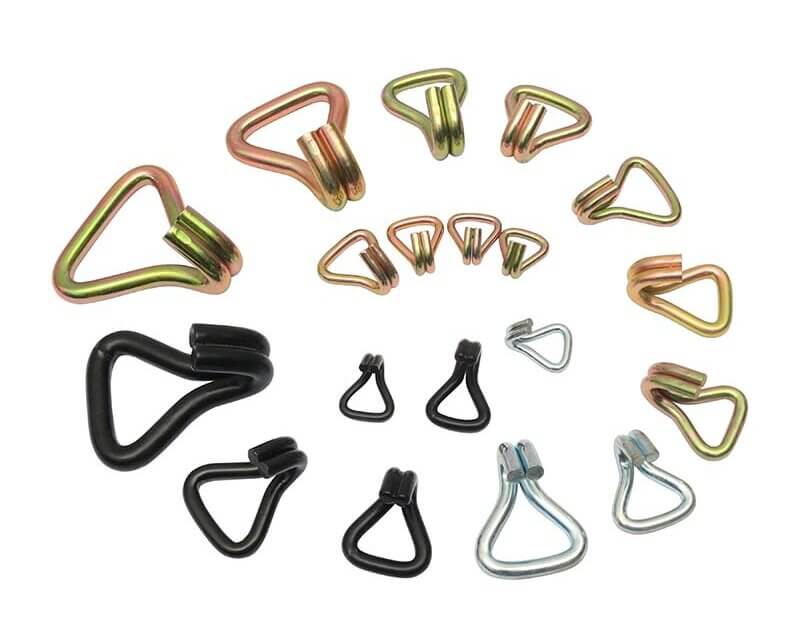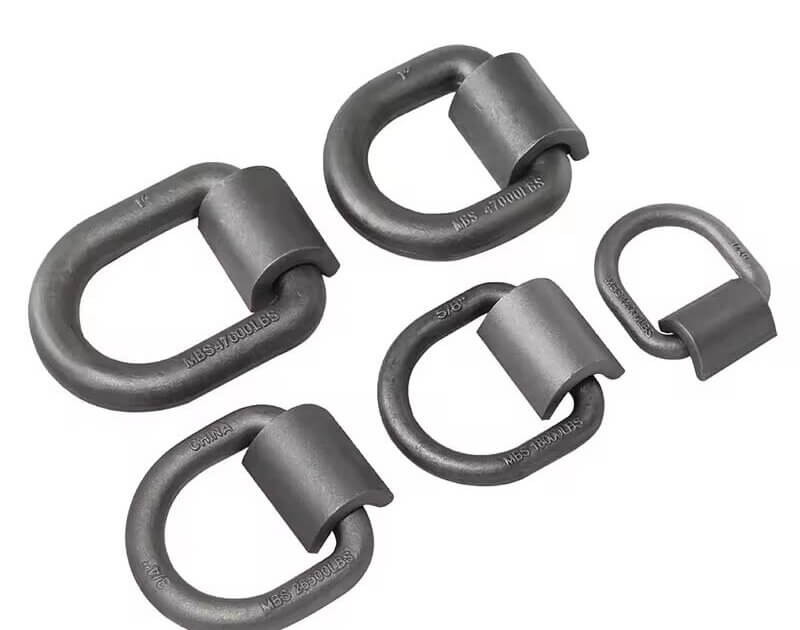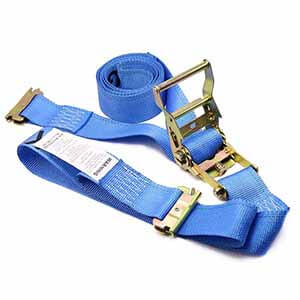The Ultimate Guide to Tie Down Hardware
In the world of transportation and logistics, reliable tie down hardware is very important to ensure the safe and secure transport of cargo. Whether you need to tie down the cargo on trucks and trailers or secure the camping components during your trip.

What is Tie Down Hardware?
Tie down hardware is a collection of essential components that are designed to secure cargo and prevent load shifting during transportation, logistics operations, and other applications where goods and properties need to be secured and protected.
Applications of Tie Down Hardware
Tie down hardware has a wide range of applications, it can well connect tie down webbing and anchor points and firmly secure the cargo. Let’s look at some common applications of tie down hardware:
Transportation and Logistics
In the transportation and logistics industries, tie down hardware is necessary to secure the cargo and prevent goods from shifting or falling during transportation. The strap hardware can be used on trucks, trailers, flatbeds, and other vehicles, firmly securing the cargo can reduce the risk of damage and improve the overall safety on the road.
Construction and Heavy Equipment
The strap tie down hardware is very important for securing the machinery and construction equipment during transportation. Properly securing these equipment can avoid accidents and potential damage when you need to move them from one place to another.
Marine and Boating
In the marine industry, the tie down hardware is used to secure the boat or other marine equipment during transportation or when they are moored at the dock.
Camping and Outdoor Activities
Tie down hardware is vital for campers and outdoor enthusiasts to secure a tent in place, fasten camping gear to vehicles, and secure loads on roof racks during camping trips, making your trip safer and enjoyable.
Types of Tie Down Hardware
Tie down hardware comes in various forms with different features and applications. Here, we will introduce the main types of tie down strap hardware with their functions.
Ratchets
Ratchets are mechanical devices designed to create tension and secure cargo firmly in place. They are mainly used to secure heavy and bulky items, such as furniture, machinery, and construction materials on trucks, trailers, and flatbeds. Their high tension makes them suitable for applications that need tight and secure hold.
Cam Buckles
Cam buckles are designed for quick and easy tensioning, suitable for light to medium-duty applications. They are used to secure camping gear, smaller loads, and household items.
Hooks
Hooks are the hardware components designed to anchor tie down straps or ropes to anchor points on transportation vehicles or secure fixtures. The hooks are commonly in the style of S hooks, J hooks, and flat hooks.
You may interested in more about tie down hooks.
Rings
The rings here we mean are tie down rings, or we can call D rings. They are made from sturdy metal, in the shape of a loop. The tie down rings are typically mounted to trailers, truck beds, or other surfaces to create anchor points for tie down straps and ropes.

How to Choose the Right Tie Down Hardware?
Selecting the proper tie down hardware is essential for the safe and secure transport of specific loads and applications. Here are some value tips and factors to consider when choosing tie down hardware.
Determine the Load Requirements
You need to check the weight, size, and shape of the loads, based on this information, you can choose different hardware components to fit specific load size, shape, and weight.
Weight Capacity
Check the weight of the tie down hardware, including the ratchets, cam buckles, hooks, and rings. Make sure that the hardware’s capacity exceeds the weight of the loads that you need to secure. It is better to choose the hardware with a higher weight capacity than the need for an extra safety margin.
Material
The material of tie down hooks, tie down rings, and ratchets can be customized according to specific needs. You can choose steel, stainless steel, or other materials to make the tie down fittings for light-duty or heavy-duty industries.
Application and Industry
Different applications have their standard for tie-down hardware. For example, if you need to use them in the marine industry, you’d better choose the stainless steel material for anti-rust purposes.
Tie Down Method
Ratchet tie downs are suitable for high-tension applications, while cam buckles are suitable for light to medium loads.
Ease of Use
You’d better choose the user-friendly tie-down hardware instead of some complicated hardware. This will help you improve your working efficiency and avoid improper use.
Anchor Points and Attachment
Ensure that the tie down hardware’s end fittings (hooks, rings, etc.) are compatible with the anchor points available on the truck, trailer, or other surfaces. The attachment points should be strong and capable of withstanding the load’s forces.
Weather Resistance
Whether your tie down hardware is used indoors or outdoors, in high-temperature conditions or cold temperatures conditions, dry environment or humid environment, choose the one suitable for the environment.
Reusability
Choose high-quality hardware that can withstand wear and tear, providing reliable performance over time.
Maintenance and Inspection of Tie Down Hardware
Regular maintenance and inspection of tie down hardware are necessary to ensure safe cargo transportation. Here are the guidelines for maintenance and inspection.
Cleaning
After each use, remove dirt, debris, and any other contaminants on the tie down hardware.
Use mild soap and water to clean metal components.
Rinse thoroughly and allow the hardware to air dry before storing.
Storage
Store tie down hardware in a clean, dry, and well-ventilated area to prevent corrosion and mold growth.
Avoid exposing tie down hardware to direct sunlight or extreme temperatures, as this can degrade the material.
Inspect Hardware Components
Inspect hooks, rings, and other end fittings for signs of deformation, cracks, or bends, as these may reduce their strength and holding capacity.
Check ratchet mechanisms for smooth operation. Ensure that the ratchet handle locks and releases properly.
Check for Corrosion and Rust
Examine metal components for rust or corrosion. Rust weakens the structural integrity of the hardware, making it less reliable.
Replace Damaged Components
If any part of the tie down hardware shows signs of wear or damage beyond repair, promptly replace it with a new, reliable component.
If you’d like to wholesale or customize tie down hardware, contact Webslingness for more information.
You may also interested in

Dave Lee
Dave Lee has amassed over two decades of experience in the cargo control industry, serving as a product manager. Prior to joining Webslingness, he spent three years at a transportation company.


